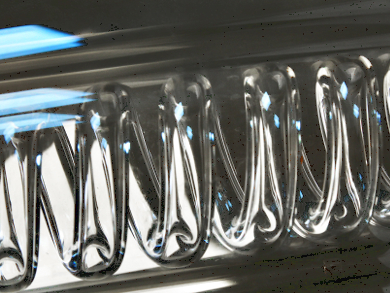Ethanol and ethyl acetate form an azeotrope at 313 K. This precludes simple distillation as a means of separating them, and alternative methods can be expensive and energy-intensive. Joan Brennecke and colleagues at the University of Notre Dame, IN, USA, investigated six ionic liquids to see which ones were best at breaking the azeotrope.
Three of the six produced excellent results: 1-ethyl-3-methylimidazolium methanesulfonate [emim][MeSO3], 1-ethyl-3-methylimidazolium methylsulfate [emim][MeSO4], and 1-butyl-3-methylimidazolium trifluoromethanesulfonate [bmim][CF3SO3]. Nonvolatile ionic liquids can be removed and recycled easily. They are also thermally stable and do not precipitate out of solution.
For ethanol-ethyl acetate mixtures, the difference between an effective and an ineffective ionic liquid is related to polarity and hydrogen bonding, which determines the liquid’s preferential affinity for ethanol. The azeotrope for any ratio of ethanol to ethyl acetate can be broken using as little as 2.5 mol% of [emim][MeSO3] or [emim][MeSO4]. This is the smallest amount of an ionic liquid needed to break an azeotrope reported in the literature to date.
- Using Ionic Liquids To Break the Ethanol–Ethyl Acetate Azeotrope,
Alfonsina E. Andreatta, Matthew P. Charnley, Joan F. Brennecke,
ACS Sustainable Chem. Eng. 2015.
DOI: 10.1021/acssuschemeng.5b01175




